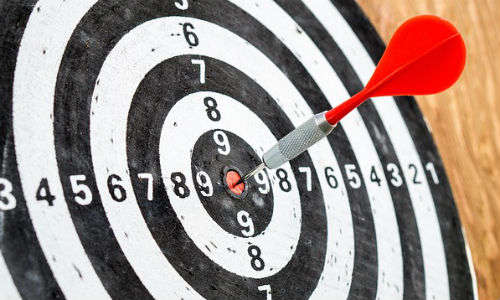In the fast-paced digital newsroom it’s easy to forget one of the most critical basics in our profession: fact-checking. The irony is that fact-checking in journalism—or sadly, the lack of—is in the limelight. BuzzFeed’s decision to publish unsubstantiated allegations about then President-elect Trump brought the issue to the forefront once more.
“What was surprising in this case was that the allegations against Mr. Trump, none of them verified, ended up on a highly popular website,” wrote columnist Leonard Downie Jr. in a Jan. 14 New York Times op-ed.
Fact-checking became a staple of the 2016 election, particularly during the debates, which were placed under a journalistic microscope. Both candidates’ statements went through the fact-checking conveyer belt at media outfits from The New York Times to PolitiFact.
And still, there isn’t enough of it on my local business reporting beat. Why should I be immune to this critical step in the journalistic process? Business reporting—often rich with numbers and data—can especially be susceptible to slips. One more zero, or one less, can make all the difference.
I was reminded of the disturbing disappearance of fact-checking on a day when I was going 100 miles an hour—Facebooking, Instagramming, Tweeting, scrolling through the multitude of emails in my inbox, juggling stories and briefs. It hit me that in my day-to-day workflow I no longer automatically practiced the skill at which I was once such a ninja.
Sheesh! I had been trained as a fact-checker at Time Inc., where the verification system was well-oiled and seemingly designed for people with OCD. Every story went through a system of red and yellow highlighting, all facts checked with a primary and secondary source. This was in the pre-Google 1990s. During my stint covering mergers and acquisitions at The Deal I adopted the habit of calling up sources—investment bankers and lawyers—and telling them that while I could not send them the story for review, I wanted to fact-check the piece with them for accuracy.
“But those are magazines,” a fellow journalist pointed out, as if newspapers have greater leniency when it comes to getting it right.
Bottom line: Sometimes it is good to be stopped and reminded of good habits.
Here are some fact-checking tips and tricks that I’ve readopted. They may not guarantee that a story is foolproof but they certainly help. And you’ll have peace-of-mind that you’ve gone out of your way to be an accurate professional.
Button up your interviews and sources
Fact-checking becomes a lot easier when your reporting is thorough. When doing interviews, especially on sensitive stories, I bring my Olympus mini-recorder, but also take ferocious notes in case of a technology fail. Recording apps such as “Call Recorder” work well with phone interviews; just be sure to first get the okay from your source (it’s illegal to record someone on the call without their permission). If interviewing in person, ask the individual to write their name, title and contact information on your notepad. While everyone and their grandmother is going paperless, I always ask for a business card. You can’t always trust the company website, which isn’t always updated or even authentic.
Create a system
Create a fact-checking system and determine what “fact-check” actually means. I return to the good old system that I learned while at Time Inc. I highlight names, titles, addresses, dates and phone numbers, and strike a line through each when it is “fact-checked.” Back in the day we relied on two tiers of sources: primary and secondary. Primary meant calling and reaching the actual source, while secondary might be say an article from an A-list publication such as The New York Times or The Wall Street Journal.
Use the Starbucks strategy
Once I’ve reported and written a story, I’ll print it out in 14 point font (there is something refreshing about seeing a story in larger font) and take a coffee break. Then I’ll leave the building (there is something reinvigorating about getting up from the desk), walk to the local café, and return with coffee in hand and highlighter in the other. I’ll go to a conference room and read the story out loud and make edits along the way, noting any facts I want to double-check.
Try some tools
In the age of information overload, fact-checking can be made easier with a myriad of additional sources. Here are a few tools that are gems.
verificationhandbook.com Guidelines on how to identify reliable user-generated content.
firstdraftnews.com Help in how to find, verify and publish content sourced from the social web.
tineye.com The place to head if you need a reverse image search.
factcheck.org/ A non-partisan consumer advocate monitoring politician accuracy.
verificationjunkie.com/ A directory of fact-checking tools.
Reporter’s takeaways
• Be proud of being a verification junkie and even OCD. It’s better to be safe than sorry and you owe it to the profession and your readers.
• As busy as the day gets, always check back with sources to verify facts. If you can’t reach them by phone, text or email them before printing the story.
• Editors are always hungry for more content, but train your editor by letting them know that you must verify the information or hear back from X and Y first before running.











